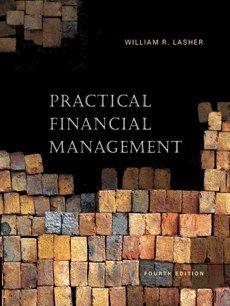
4 CC6.1 A Company has 6,000 bonds outstanding with 10 years to maturity. These bonds have a $1000 face value, a 10 percent coupon (per annum). The bonds are quoted at 100 percent of their face value. The Company has 1,100,000 shares outstanding. The book value per share is $7 while the market price is $21.50 per share. The Company has the leverage beta of 1.54 and faces a tax rate of 19%. The market quotations show that the Company's share price rose 35% last year and analysts expect 25% growth in the next years. The main stock index on this capital market performs 14% yearly and T-Bond rate is 7%. Calculate the cost of common stock equity using the capital asset pricing model (CAPM), the cost of debt (after tax), and the weighted average cost of capital (WACC) for this Company. The Company's cost of common equity is equal: % (round 1 digit after decimal point) The Company's weighted average cost of capital is equal: % (round 1 digit after decimal point) (round 2 digits after decimal The Company's asset beta (unlevered, before share buyback) is equal: point) Let's assume, the Company buys back 15 percent of its own stake in tender offer with price of $22.50 per share (paying with cash remaining on its balance sheet) and the share price remains on the same level after share buyback. It influences company's equity and its debt ratio. Assuming (for simplicity) that the company's beta of debt is equal zero, assess how share buyback will influence Company's equity beta, the cost of equity, and the weighted average cost of the capital? (round 2 digits after decimal point) The Company's levered beta after share buyback is estimated: % (round 1 digit after decimal point) The Company's cost of equity after share buyback is estimated: The Company's WACC after share buyback is estimated: Reset % (round 1 digit after decimal point) 4 CC6.1 A Company has 6,000 bonds outstanding with 10 years to maturity. These bonds have a $1000 face value, a 10 percent coupon (per annum). The bonds are quoted at 100 percent of their face value. The Company has 1,100,000 shares outstanding. The book value per share is $7 while the market price is $21.50 per share. The Company has the leverage beta of 1.54 and faces a tax rate of 19%. The market quotations show that the Company's share price rose 35% last year and analysts expect 25% growth in the next years. The main stock index on this capital market performs 14% yearly and T-Bond rate is 7%. Calculate the cost of common stock equity using the capital asset pricing model (CAPM), the cost of debt (after tax), and the weighted average cost of capital (WACC) for this Company. The Company's cost of common equity is equal: % (round 1 digit after decimal point) The Company's weighted average cost of capital is equal: % (round 1 digit after decimal point) (round 2 digits after decimal The Company's asset beta (unlevered, before share buyback) is equal: point) Let's assume, the Company buys back 15 percent of its own stake in tender offer with price of $22.50 per share (paying with cash remaining on its balance sheet) and the share price remains on the same level after share buyback. It influences company's equity and its debt ratio. Assuming (for simplicity) that the company's beta of debt is equal zero, assess how share buyback will influence Company's equity beta, the cost of equity, and the weighted average cost of the capital? (round 2 digits after decimal point) The Company's levered beta after share buyback is estimated: % (round 1 digit after decimal point) The Company's cost of equity after share buyback is estimated: The Company's WACC after share buyback is estimated: Reset % (round 1 digit after decimal point)







